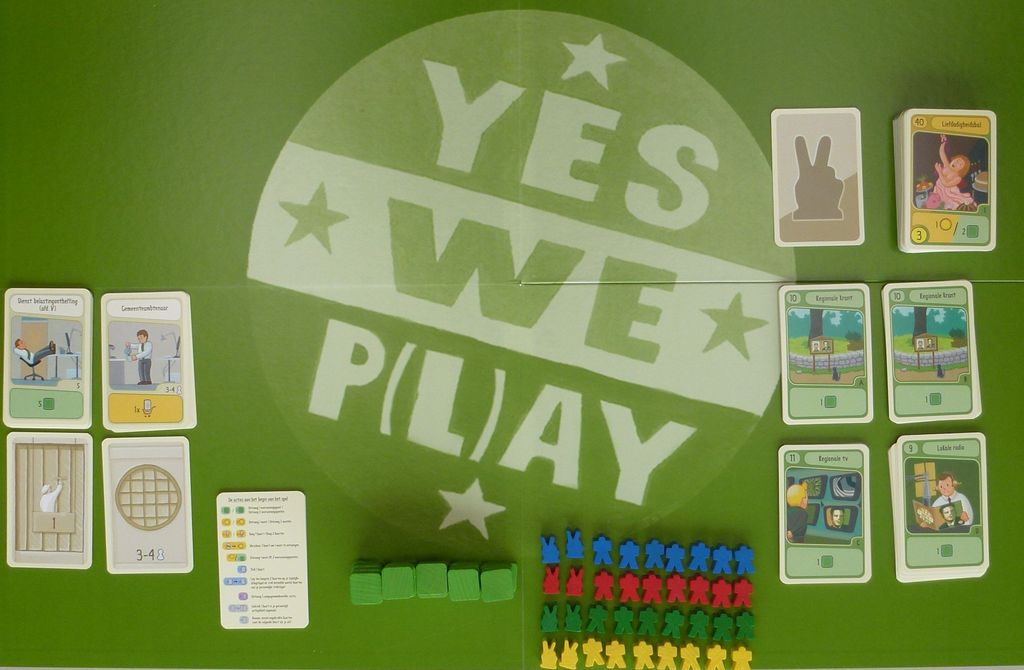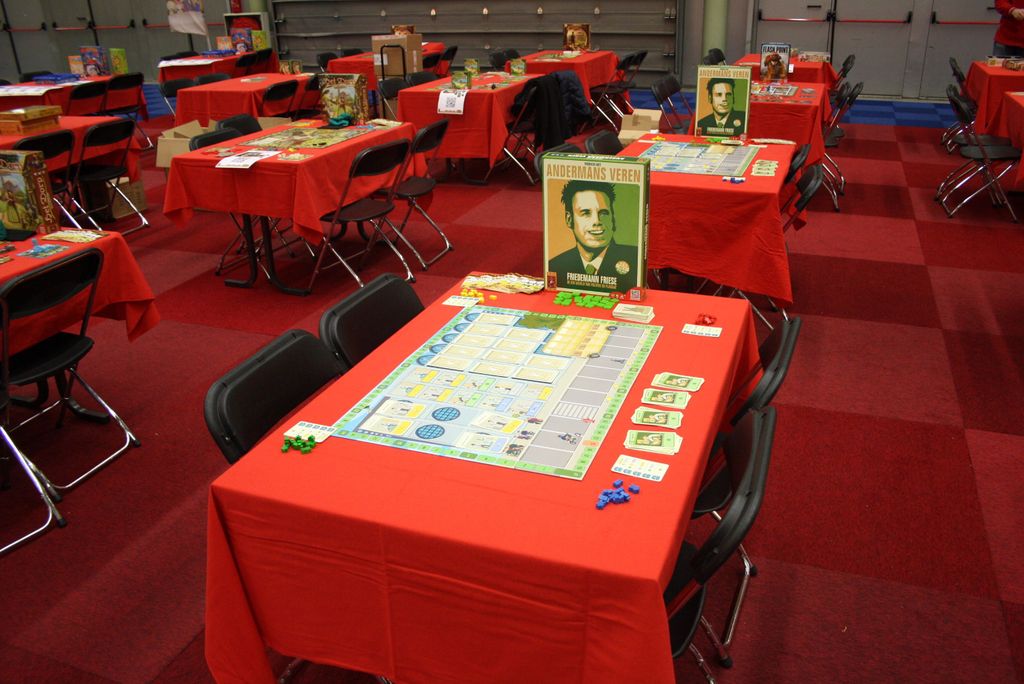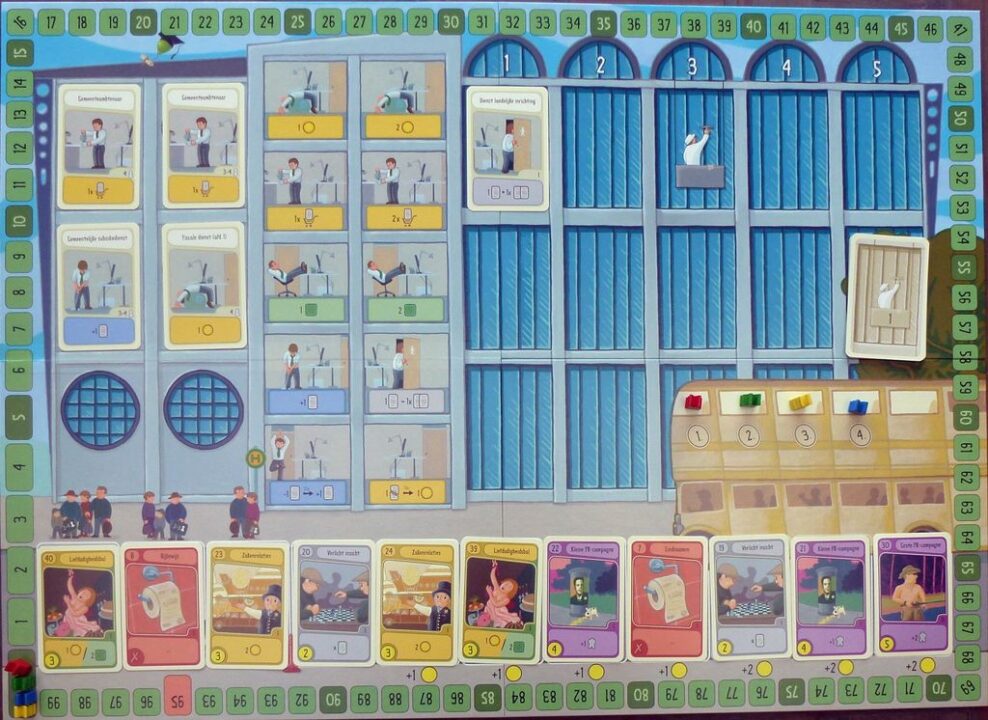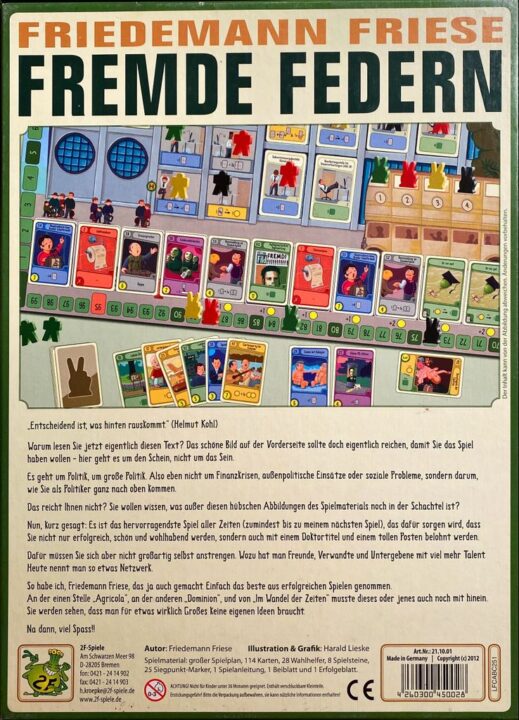I sat down with friends last Friday for what I thought would be a quiet game night. Instead, it turned into a wild scramble for victory points and outsmarting each other at every turn. Yep, that’s right—this is my review of Copycat, the game that mashes deck-building and worker placement together like peanut butter and jelly… if the jelly could steal your lunch. Spoiler: strategic minds will love it, but anyone hoping to win by random luck should probably stick to rolling dice with their grandma.
How It Plays
Setting up
Each player grabs a player board, a set of starting cards, and their meeples. Shuffle the big deck of cards and lay out the game board. Reveal a fresh batch of cards for folks to buy. Place tokens, coins, and other bits within reach. Try not to drop anything on the dog.
Gameplay
On your turn, you play cards from your hand to get money or special actions. Place your meeples on the board to grab resources, score cards, or block your friend from stealing that juicy spot you wanted. Use money to buy new cards, making your deck better for next round. Turns keep rolling until everyone runs out of options. Then, clean up and shuffle for next round. Repeat. Yes, it really is that snappy.
Winning the Game
After a set number of rounds, tally up your points from cards, tokens, and the stuff you’ve collected. Whoever has the most points is crowned Ultimate Copycat Champion. If there’s a tie, argue about it or just play again.
Want to know more? Read our extensive strategy guide for Copycat.
Copycat’s Core Gameplay Loop: Stealing the Show, Literally
There’s something suspiciously familiar about Copycat, but that’s the whole point! The game takes the best parts from popular Euro board games—think deck-building, worker placement, and strategic card play. When I sat down with my friends, it felt like we were playing a ‘greatest hits’ compilation. But unlike those awkward Now That’s What I Call Music! CDs from my childhood, Copycat actually remixes the classics in a fun way.
Each player starts with a limited hand of cards and a couple of workers. Your goal? Use your cards to snag more powerful actions, send workers to juicy spots on the board, and earn points faster than your rivals. The main gameplay loop looks a bit like this: play cards, send workers, collect resources, grumble about your poor choices, and repeat. Every round, you get new options as you build your deck—sort of like if Dominion met Agricola at a convention and things got weird.
The tension comes from the competition for spaces. Players often wrestle for the best actions, which adds some light-hearted grudges. But luck takes a back seat—most results actually depend on your choices and timing. As a serial shuffler with the worst luck, I like that Copycat rewards clever thinking more than dice rolling. The deck-building feels a bit lighter than what I’m used to, but it’s still satisfying when you finally upgrade your hand. Be warned, though: sometimes the game can drag if folks overthink their turns. I recommend a kitchen timer or a stern grandma as the official timekeeper.
So if you want a game loop that keeps everyone plotting and scheming, Copycat gets it right. But how nasty can things get between players? Oh, let’s just say the claws come out in the next section on player interaction and competition level.

How Copycat Turns Friends Into Frenemies: Player Interaction and Competition
If you think your friend group is peaceful and chill, just wait until you break out Copycat. The player interaction in this game is spicy enough to ruin a potluck. Every turn, you’re not just building your own empire—you’re also eyeing that one space your friend desperately wants and then plonking your meeple right on it. There’s a special joy in hearing them groan. I watched Becky threaten to flip the table because I nabbed her favorite action spot three games in a row. No one was seriously injured, but I did lose brownie privileges for a week.
The competition level in Copycat is what I’d call “sharp, but bearable.” There’s no direct sabotage, so you won’t be trashing someone’s deck or stealing their hard-earned points. But boy, the indirect blocking is real. Want that fancy new card? Too bad, because we all do. This leads to some hilarious (and slightly stressful) rounds, especially when you realize you’re two moves away from greatness—unless someone blocks you again, which happens a lot. People with a love for gentle, non-confrontational games might find this a tad nerve-wracking. But for those who live for sneaky plans and passive-aggressive table banter, Copycat serves it up on a silver platter.
My favorite memory was when Steve plotted for half the game to grab a big-point card, only for Lisa to swoop in and take it. He didn’t speak for five minutes. In short, Copycat demands that you pay attention to what others are up to, and rewards clever maneuvering. It’s competitive but never mean-spirited, which keeps things fun—unless you’re Steve.
Next up, let’s talk about the physical stuff: the bling and beauty (or lack thereof) of Copycat’s component quality and visual design!

Component Quality and Visual Design in Copycat: Sharp Looks & Quirky Bits
Let’s talk about what your eyeballs and fingers get to enjoy in Copycat. First, the box feels satisfyingly hefty. That’s usually a sign you’re not just paying for air and disappointment. Inside, you’ll find a tidy board, chunky worker tokens, and a stack of cards that are, blessedly, not as thin as your patience after a three-hour Monopoly session. The card art strikes a weird balance between playful and surprisingly professional—think office satire with a wink, but thankfully, no TPS reports required.
I played Copycat at my friend Pete’s kitchen table, and nobody needed a magnifying glass to read the text. (Sorry, Splendor, but I’m looking at you with squinty eyes.) The iconography is clear, which is great because you’ll be glancing at your hand, pondering your next move, and glaring at the player who just took the spot you wanted. The board’s layout is smart, uncluttered, and color-coded enough that even my colorblind cousin navigated without a single grumble. Honestly, you can tell that the designer cared about usability—nothing felt like a chore to sort or set up.
As for durability, I’ve played Copycat enough to spill salsa on the cards (don’t worry, they wiped clean) and drop the worker tokens under the table. Everything still looks sharp, no corners split, no tokens lost to the abyss. My only nitpick? The theme could use just a touch more flair in the visuals to drive home the boardroom chaos, but that’s me nitpicking. Next up, we’ll see if Copycat keeps calling you back to the table, or if it’s a one-hit wonder in the replay value department!

Is Copycat Fun Forever? Replay Value & Long-Term Appeal
I’ve played Copycat enough times that if it were a pet, it would already know three tricks and have chewed through at least one old sneaker. The replay value? It’s surprisingly solid. Each game can feel different thanks to the changing layout of action cards and the deckbuilding options. My buddy Steve once tried a wild strategy that I thought would crash and burn, but it nearly won him the game. It’s the kind of experience that begs you to try something new next time, just to see if you can pull off an even sillier combo.
Now, Copycat isn’t one of those games where you’ll find new secrets every single session. After a dozen plays, you’ll see the core set of cards and possible actions. But because the cards and available actions shift around, it scratches that itch for a fresh experience each time. I’ve never had two games play out exactly the same, unless you count me losing to my sister twice in a row (which I don’t, and neither should you).
The long-term appeal comes from the way Copycat mixes real strategy with just enough chaos to keep you guessing, without tipping into pure luck territory. It’s not the absolute king of endless replay, but if you’re looking for a clever, satisfying game that stays interesting for a good long while, Copycat will keep finding its way back to your table. I recommend it for folks who want depth without getting lost in rules about alpaca breeding or 17-step turns. Give it a shot!

Conclusion
And there you have it, folks—my copycatting days are over! Copycat mixes smart deck-building and worker placement in a funny-looking package. The game always makes me scratch my head (in a good way), and it keeps my friends on their toes. I wish the art had a bit more wow, but the components do their job. It’s a solid pick if you want a game that rewards planning and sneaky moves, and won’t leave you cursing dice rolls. This wraps up my review. If you’re after a thinky game with a dash of chaos, Copycat is worth a shot. But, if you want pretty art for your Instagram, maybe look elsewhere!


